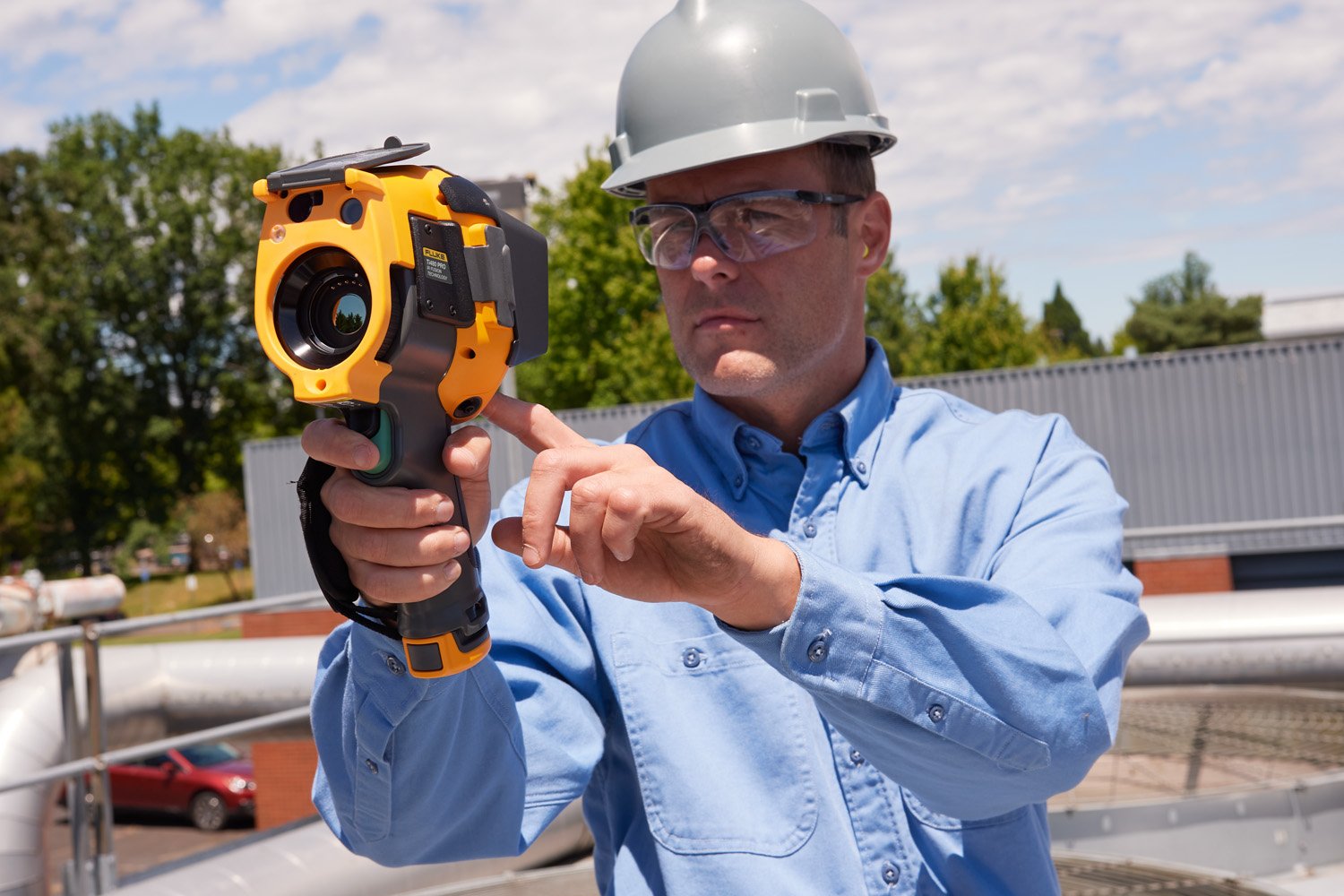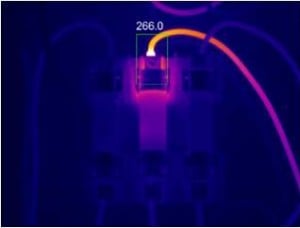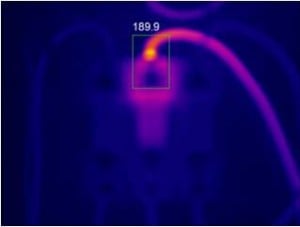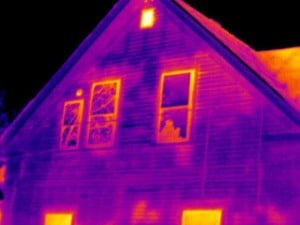Whether you’re just learning to use a thermal camera (also known as a thermal imager) or you’re an expert thermographer, you’ve probably heard the mantra “Focus First!”! The rationale for that mantra is simple: of all the settings that can be adjusted, focus is by far the most important in improving thermal camera accuracy.
 Technician adjusting the focus on the Fluke Ti401 PRO Thermal Camera
Technician adjusting the focus on the Fluke Ti401 PRO Thermal CameraFocus is essential to both image quality and temperature accuracy. A blurry thermal image can disguise a critical temperature anomaly in a piece of equipment. An out-of-focus thermal image can produce a temperature measurement that’s off by as much as 20 degrees…perhaps more. That significant temperature difference could lead you to an incorrect conclusion.
Out of focus could mean bad data
The images below both isolate the maximum apparent temperature of the same electrical component. Each displays the same detected anomaly, but each displays a different temperature.
 In sharp focus, the thermal imager has captured a clear representation of the amount of thermal energy emitted from the surfaces within the box. This sharp focus allows the thermal camera to more accurately measure that energy and assign a temperature value to it.
In sharp focus, the thermal imager has captured a clear representation of the amount of thermal energy emitted from the surfaces within the box. This sharp focus allows the thermal camera to more accurately measure that energy and assign a temperature value to it.  Here, the focus is muddy. This reduces the clarity of the energy captured by the thermal camera and produces a measurement more than 76 degrees cooler than the more in-focus image.
Here, the focus is muddy. This reduces the clarity of the energy captured by the thermal camera and produces a measurement more than 76 degrees cooler than the more in-focus image.The above images clearly demonstrate that focus is key to achieving higher thermal camera accuracy.
Reflect light vs. emissivity
As you know, focusing on a target with a thermal camera presents more challenges than with a visual light camera. With a visual image camera, we can take advantage of reflected light that tends to produce sharp contrast between objects. In thermography we need to deal with energy that is emitted from the surface. It is unusual to have surfaces with sharp temperature differences next to each other. So, as heat energy moves through solids, liquids, and gasses, crisp lines between objects disappear, making focus a challenge.
There are a few simple ways to improve your focus:
- Turn your camera to gray scale. The human eye can typically focus more easily in black and white (gray scale) than in other color palettes
- Look for a sharp edge in the field of view
- Hold the camera still
- If you have a Fluke thermal camera, use “IR-Fusion” in the picture-in-picture mode. Slide the two images (visible light and IR) up and down independently until they line up, which will put the target in perfect in focus!
Choose the type of focus that matches your applications
One of the most important factors in choosing the type of thermal imager focus system you want is making sure it matches your applications. When selecting a thermal camera, you can choose from three general types of focus systems:
- Fixed focus: These offer point and shoot technology that focuses on targets at a specific distance and beyond. These cameras generally have low resolution and are used typically to quickly scan an area to find obvious hot and cold spots.
- Manual focus: Used mostly by experienced thermographers, manual focus thermal cameras are generally higher resolution. They can be used to precisely focus very close to the target and/or to capture much sharper images from further away. Keep in mind, they require more time to achieve precise focus, especially for novice thermographers.
- Auto focus: This type of focus system encompasses a variety of automatic focus technologies including laser-assisted auto focus and multifocal image capture. It expedites sharp focusing for both experienced and novice thermographers.
 This image is crisper and provides more detail because the focus is sharper
This image is crisper and provides more detail because the focus is sharperOut of focus images not only affect the accuracy of your results, they can affect your ability to communicate those results effectively to your client or maintenance manager. Consider the following:
 The blurriness of the image makes it more difficult for a client to identify thermal anomalies
The blurriness of the image makes it more difficult for a client to identify thermal anomaliesWhile it’s easy to see that the object in both images is a house, the crisper image provides more detail. Most customers will notice image quality immediately, and the sharper the image, the easier it is to clearly point out thermal anomalies.
Find more details about focus options and other key features and practices related to thermal inspection here.